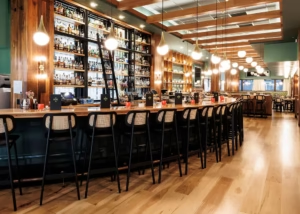Antique cooking utensils are more than just kitchen tools. They are pieces of history, connecting us to the past. Whether passed down through generations or found at a flea market, these utensils deserve care and attention. Cleaning and preserving them properly ensures they last for years. In this guide, you will learn step-by-step methods to care for antique cooking utensils safely and effectively.

Understanding the Material
Before cleaning begins, it’s important to identify the material of your antique cooking utensils. These tools were made from various materials like cast iron, copper, brass, wood, tin, and aluminum. Each one requires a different method of care. For instance, wooden handles need gentle cleaning, while copper tools often need polishing. Knowing the material helps you avoid causing damage during the cleaning process.
Most importantly, avoid harsh chemicals. Many modern cleaners are too abrasive for antique finishes. Always choose natural or mild solutions. This approach protects both the integrity and the look of the utensil. When in doubt, test a small area first.
Initial Cleaning Steps
Start with a basic dusting. Use a soft brush or dry cloth to remove surface dirt. This prevents scratches when deeper cleaning begins. If the utensil is greasy or grimy, soak it in warm water mixed with mild soap. Do not soak for too long, especially if the item has wooden parts. Wood absorbs water quickly and may crack or warp.
Gently scrub using a sponge or soft cloth. Avoid using steel wool or anything too abrasive. For tougher grime, use baking soda mixed with water. This acts as a gentle abrasive without harming the surface. Make sure to dry the utensil completely after washing. Moisture is the main cause of rust and damage.
Removing Rust the Right Way
Rust is common in old metal kitchen tools. But don’t worry — it’s removable. First, use a mixture of vinegar and water. Soak the rusty parts for a few hours. After soaking, scrub lightly with a brush. For stubborn rust, you can apply a paste of baking soda and lemon juice. This combination helps lift rust without damaging the metal.
Once the rust is gone, rinse the utensil and dry it thoroughly. Do not leave any moisture behind. Rust can return quickly if the surface is still damp. To prevent future rusting, you can apply a thin layer of mineral oil to the metal. This seals the surface and protects it from air exposure.
Caring for Wooden Handles
Many antique cooking utensils feature beautiful wooden handles. These need special care. Never soak them in water. Instead, wipe them down with a damp cloth. If they are dirty, use a bit of mild soap on a soft sponge. After cleaning, dry the handle right away with a soft towel.
To maintain wood, use food-safe mineral oil or beeswax. Rub it into the handle and let it soak for a few hours. This prevents cracking and keeps the wood supple. Regular oiling also restores the wood’s natural color. Try to oil wooden parts every few months for the best preservation.
Polishing Metal Surfaces
Metal antique cooking utensils, especially those made from brass or copper, often tarnish over time. While tarnish isn’t always harmful, it can dull the beauty of the utensil. Use a mix of lemon juice and baking soda to polish the surface. Apply it gently using a cloth, then buff the utensil until it shines.
Avoid harsh commercial polishes. These may contain chemicals that strip away the original finish. Natural methods are safer and equally effective. Once polished, rinse the utensil and dry it completely. Store it in a dry place to prevent new tarnish from forming.
Storing Antique Cooking Utensils
Proper storage is key to preserving antique cooking utensils. Keep them in a dry, cool place away from direct sunlight. Humidity causes rust and mold, especially on wooden or iron utensils. Use padded hooks or soft cloth-lined drawers to avoid scratches.
Never stack heavy items on top of fragile ones. This can lead to cracks or warping. If you display your utensils, keep them dust-free. Use a glass case or open shelves, and clean them often to maintain their charm. Displaying your collection adds character to your kitchen and keeps your utensils within reach.
Routine Maintenance Tips
Even after cleaning, antique cooking utensils need regular upkeep. Dust them every week. Inspect them monthly for any signs of rust or wear. Reapply oil to metal or wood parts every few months. If a part becomes loose, tighten it carefully using the correct tools.
Avoid exposing the utensils to extreme temperatures. Hot water, ovens, or dishwashers can damage antique materials. Instead, handwash gently after each use and dry immediately. By keeping up with routine care, you extend the life and beauty of your collection.
Common Mistakes to Avoid
There are several mistakes people make when caring for antique cooking utensils. One of the biggest is using abrasive cleaners. These can scratch or damage delicate finishes. Another mistake is soaking wooden-handled tools for too long. This can cause the wood to swell or crack.
Don’t leave metal utensils wet. This promotes rust. Avoid using modern dishwashers. The heat and strong detergents can ruin antique pieces. Lastly, don’t attempt repairs unless you’re sure of the technique. It’s best to consult a professional for restoration needs. These mistakes can shorten the life of your utensils.
When to Seek Professional Help
Some antique cooking utensils are too fragile or rare to clean at home. If you’re unsure about the value or material, consider talking to a professional. They can offer advice or do the cleaning for you. This ensures the utensil remains intact and retains its value.
Professionals also help with restoring broken handles, polishing delicate metals, or identifying rare pieces. While this may cost more, it’s worth it for valuable items. Think of it as a long-term investment in preserving history.
Benefits of Preserving Antique Cooking Utensils
Why go through all this effort? Antique cooking utensils carry stories. Each scratch, mark, and design tells a tale from the past. By preserving them, you protect cultural and family heritage. They also add charm and authenticity to your kitchen.
Many people find joy in cooking with these items. It brings a sense of nostalgia and connection. Others use them for display, enhancing the beauty of their home. In any case, proper care ensures these treasures last for generations.
Cleaning and preserving antique cooking utensils is a fulfilling task. It requires patience, care, and consistency. By understanding their materials, using the right methods, and avoiding common mistakes, you keep your collection safe and beautiful.
Whether you collect these tools for their history, beauty, or functionality, caring for them properly ensures they remain useful and treasured. With regular maintenance and gentle handling, your antique cooking utensils can stand the test of time.




